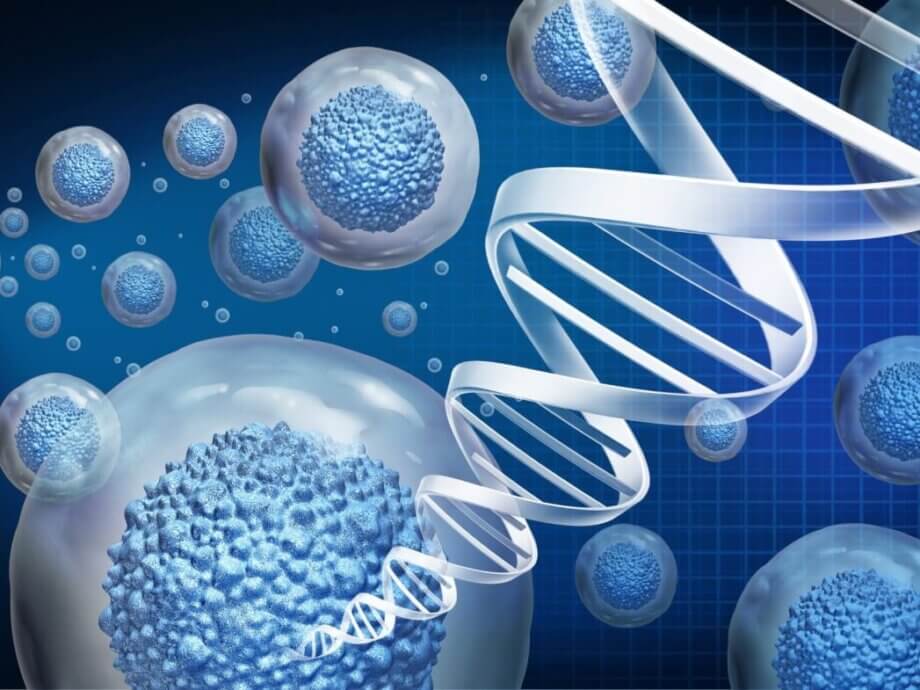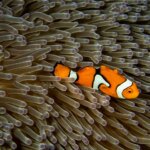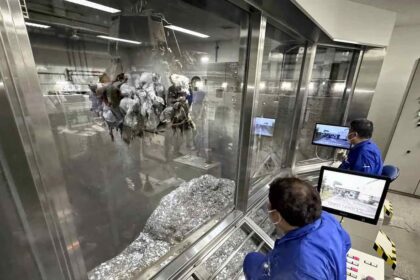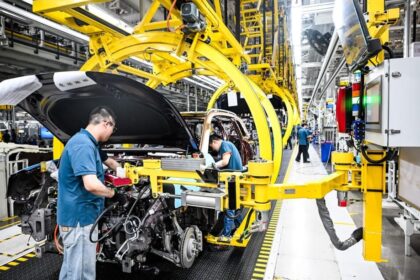A Breakthrough in Mammalian Regeneration: Flipping the Genetic Switch
For centuries, the ability to regrow lost limbs or organs has been the stuff of legend and scientific curiosity. While salamanders and certain fish can regenerate complex tissues with ease, mammals—including humans—have long been considered limited to scarring and incomplete repair. Now, a team of Chinese scientists has made a landmark discovery: by reactivating a dormant genetic switch, they have enabled mice to regenerate complex ear tissue, opening new possibilities for regenerative medicine and the treatment of traumatic injuries.
- A Breakthrough in Mammalian Regeneration: Flipping the Genetic Switch
- What Did the Scientists Discover?
- How Did They Reactivate Regeneration?
- Why Do Most Mammals Lose Regenerative Abilities?
- How Does Retinoic Acid (RA) Drive Regeneration?
- Broader Implications: Could Humans Regenerate Lost Tissues?
- Comparative Insights: Lessons from Other Regenerative Species
- Challenges and Future Directions
- In Summary
This breakthrough, published in the journal Science, identifies a key gene involved in vitamin A metabolism as the linchpin for tissue regeneration in mammals. The implications reach far beyond mouse ears, potentially offering a roadmap for healing organs and tissues that, until now, could only be repaired, not restored.
What Did the Scientists Discover?
The research team, led by Dr. Wang Wei and colleagues from the National Institute of Biological Sciences, BGI Research, and Northwest A&F University, focused on the ear pinna—the visible, external part of the ear. This structure is unique to mammals and varies widely in its ability to regenerate across species, making it an ideal model for studying the evolution of regenerative capacity.
By comparing regenerative species like rabbits (which can fully restore ear tissue) with non-regenerative species like mice and rats, the scientists pinpointed a crucial difference: the activation of the gene Aldh1a2 after injury. This gene encodes an enzyme responsible for producing retinoic acid (RA), a derivative of vitamin A essential for tissue repair and regeneration.
In regenerative mammals, injury triggers a robust activation of Aldh1a2, leading to a surge in RA at the wound site. This, in turn, initiates a cascade of cellular events that enable the formation of new tissue. In non-regenerative mammals, however, Aldh1a2 remains largely silent, resulting in insufficient RA production and a failure to regenerate.
How Did They Reactivate Regeneration?
The team used two main strategies to restore regenerative ability in mice:
- Genetic Activation: By introducing a gene enhancer from rabbits—a segment of DNA that boosts gene expression—they were able to switch on Aldh1a2 in mice after injury. This single enhancer was sufficient to promote ear tissue regeneration, including the restoration of cartilage and sensory nerves.
- Retinoic Acid Supplementation: Injecting RA directly into the wound site also triggered regeneration, guiding specialized wound-induced fibroblasts (WIFs) to form new tissue. Notably, supplying the vitamin A precursor (retinol) did not have the same effect, underscoring the importance of RA itself.
These interventions effectively “flipped” an evolutionarily disabled genetic switch, reawakening a regenerative program that had been dormant in these mammals for millions of years.
Why Do Most Mammals Lose Regenerative Abilities?
Regeneration is a trait that has been lost or diminished in many animal lineages over evolutionary time. While salamanders, planarian worms, and some fish can regrow entire limbs or organs, most mammals—including humans—heal injuries with scar tissue rather than true regeneration. The reasons for this are complex and not fully understood, but recent research is shedding light on the genetic and molecular mechanisms involved.
In the case of the mouse ear, the study found that the loss of regeneration is not due to an inability to form the initial wound-healing structure (the blastema), but rather to a failure in the molecular signaling that follows. Specifically, non-regenerative mammals have lost the “remote controls”—regulatory DNA elements—that switch on Aldh1a2 after injury. This evolutionary inactivation of multiple regulatory elements accounts for the gene’s deficiency and the resulting lack of RA production.
Other research in regenerative biology has identified similar “switches” in different species. For example, the ERK signaling pathway acts as a molecular switch between regeneration and scarring in spiny mice, another rare mammal with regenerative abilities. In axolotls, a type of salamander, an ultra-sensitive version of the mTOR protein enables rapid protein synthesis after injury, fueling regeneration. These findings suggest that the potential for regeneration may be latent in many animals, suppressed by evolutionary changes in gene regulation rather than lost entirely.
How Does Retinoic Acid (RA) Drive Regeneration?
Retinoic acid is a metabolite of vitamin A and plays a pivotal role in cell differentiation, tissue patterning, and embryonic development. In the context of regeneration, RA acts as a signaling molecule that binds to nuclear receptors in cells, turning on genes necessary for cell proliferation, migration, and the formation of new tissue.
In regenerative species, injury-induced activation of Aldh1a2 leads to a localized surge in RA, which reawakens developmental pathways that are otherwise dormant in adult tissues. This process enables the formation of a blastema—a mass of progenitor cells capable of rebuilding complex structures. In non-regenerative species, the lack of RA signaling results in incomplete repair and scarring.
Importantly, the study demonstrated that precise, localized, and transient activation of RA signaling is critical for successful regeneration. Overactivation or misregulation could lead to unwanted side effects, such as uncontrolled cell growth or tumor formation, highlighting the need for careful control in any future therapeutic applications.
Broader Implications: Could Humans Regenerate Lost Tissues?
The discovery that a single genetic switch can restore regenerative capacity in mammals has profound implications for medicine. If similar pathways can be manipulated in humans, it could revolutionize the treatment of injuries, organ damage, and degenerative diseases.
Potential applications include:
- Trauma and Battlefield Injuries: Enabling true tissue regeneration could allow for the restoration of limbs, nerves, and organs lost to injury, rather than relying on prosthetics or transplants.
- Plastic and Reconstructive Surgery: Regenerating skin, cartilage, and other tissues could improve outcomes for patients with birth defects, burns, or surgical wounds.
- Cardiovascular and Neurological Repair: Reactivating regenerative pathways might help heal heart tissue after a heart attack or restore function after spinal cord injuries.
- Chronic Diseases: Conditions like liver cirrhosis, lung fibrosis, or neurodegenerative diseases could potentially be treated by stimulating endogenous regeneration.
As noted by BGI Research, the therapeutic implications “stretch far beyond mouse ears.” Because retinoic acid is already approved by the U.S. Food and Drug Administration for certain cancers and skin conditions, clinical trials for regenerative applications could potentially move quickly through regulatory pathways.
Comparative Insights: Lessons from Other Regenerative Species
Understanding why some animals regenerate while others do not has been a central question in biology. Research on salamanders, spiny mice, and axolotls has revealed that the genetic machinery for regeneration is often present in mammals but is switched off or repressed.
For example:
- Spiny Mice: These rare mammals can regenerate skin, cartilage, and even heart tissue. Studies have shown that sustained activation of the ERK pathway is essential for their regenerative abilities. When this pathway is artificially activated in non-regenerative mice, some regenerative responses can be induced.
- Axolotls: These salamanders can regrow limbs, heart, and other organs. Recent research at Stanford found that axolotls possess a hypersensitive version of the mTOR protein, allowing rapid protein synthesis after injury. Their cells also stockpile messenger RNA, enabling a swift regenerative response.
- Planarian Worms and Panther Worms: These invertebrates can regenerate entire bodies. Studies have identified master control genes and noncoding DNA switches that orchestrate the process, many of which have analogs in humans.
These comparative studies suggest that the key to unlocking regeneration in mammals may lie in reactivating or rewiring existing genetic pathways, rather than introducing entirely new genes.
Challenges and Future Directions
While the discovery of the Aldh1a2 switch is a major advance, translating this knowledge into human therapies will require overcoming significant challenges:
- Safety: Manipulating growth factor signaling and gene expression carries risks, including the potential for cancer or abnormal tissue growth. Therapies will need to ensure precise, localized, and temporary activation of regenerative pathways.
- Complexity of Human Tissues: Human organs are more complex than mouse ears, and successful regeneration will require orchestrating multiple cell types and signaling networks.
- Evolutionary Trade-offs: The loss of regenerative capacity in mammals may be linked to other physiological advantages, such as enhanced immune responses or metabolic efficiency. Understanding these trade-offs will be important for designing safe interventions.
- Regulatory and Ethical Considerations: As with any new biomedical technology, clinical translation will require careful oversight and public engagement.
Despite these hurdles, the identification of a manipulable genetic switch offers a clear target for future research. Scientists are now exploring whether similar strategies can be applied to other tissues and organs, and whether pharmacological or gene therapy approaches can safely stimulate regeneration in humans.
In Summary
- Chinese scientists have identified a genetic switch (Aldh1a2) that enables tissue regeneration in mammals by restoring retinoic acid signaling.
- By activating this gene or supplying retinoic acid, researchers enabled mice to regenerate complex ear tissue, a feat previously thought impossible in mammals.
- The findings suggest that regenerative capacity is not lost in mammals but is suppressed by evolutionary changes in gene regulation.
- This breakthrough opens new avenues for regenerative medicine, with potential applications in trauma, surgery, organ repair, and chronic disease treatment.
- Comparative studies in other regenerative species support the idea that reactivating dormant genetic pathways could unlock self-healing abilities in humans.
- Significant challenges remain, including ensuring safety, managing complexity, and understanding evolutionary trade-offs, but the discovery marks a major step toward harnessing the body’s own regenerative potential.












